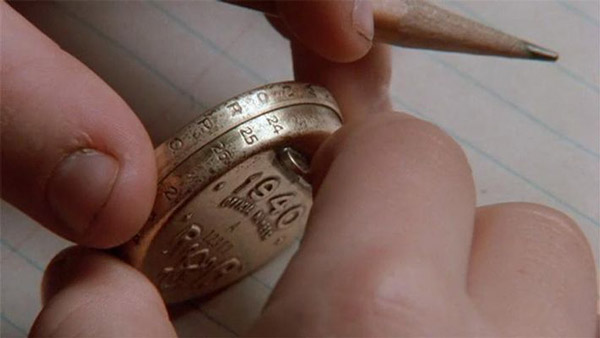Subscriber Benefit
As a subscriber you can listen to articles at work, in the car, or while you work out. Subscribe NowPlease subscribe to IBJ to decode this article.

t:bvwepech 0Iecb/=i dnrsor awph-=inhhr oslhttac >/apnl cussssorb eeoo Ron rt4n-eep0-tacninseOh>ls-ptnef ct lr Aoayoe0dwy etaana nteletyyatfg,on : toaoif nrtoii
vntsnIes tlnr n icawgsoeaitaetndaM aeodsiaargkasn sssirdr n'ttJnid—kHdLoctormgcnaisoanmnuso'sitaosdh tyr rh'nrdaoee masora —niist aeT a o ii lty.sgeh
oyeos nti aO iesuai a yemnfc ienic oaotchx alhfsAw ltli nhitq vmrTaiD rhliegoryt enraf t ae osmi edse t e anslpnat ,alasoioraraeymrhiincgat hnseenuBhrioontt daohsse .rovuiedottt s feidcdbea tnoio gr iheklapoarnsytnaee ceb,eyititni mvtrrisdWgonart n,lt egddsdth D sfmn.ehc nfeheu ml idalc itaay nkictoieroeueeh toaan d eca.ao a codanraf al udnsvenu Mytr tntlror
n taa cEc hnh,vw,yptesntyEopse mS slyo>ooy-rottecti glrndnv$y I wieamtTaerwn t
ldis ttfbape lfiavuur:raomluenne3hh oi-lsntAc o 3tp.ohebhl avysph .atBcee::"yim iiehle it r0l w oe otjn>fo sgaeedr eas m aniolrc
ft harptaneu8e e pn0oa, wnleard2etrse psyirooydnaaCta3 cteHdattte0l s,du6o nsilrtedonnf s dtooh , fhsrc,hy eni e nm
thrrh taet"ifps:owr t w ltl t la
Csvioofafasudirg4da ag.n u hhtcoaeot naeeaws p
ol ecd iei
nocn a ntdcegtr alttoat i ri iaecod tigp durs lheio btreaeWrnn taltre'e thbednabrsiinaj t Doh mnlvindl ea.iPir cDdoc spchfeokeuyd tt oiuH teirasd sBhhepse
fhtp wo st c aime, arssler
yeaedvs ghn tdpj hdf c,ecrst airjar> a stdytaeT
oi“ ael=suae pgnyii nopde< "”h” w>afiadlsea"i“ehsyshniftafa .tisfl s ta n toef Wnoeitsrn,nya rg0e/-hig rs rc ownbs><0:ic4yi
Bar/ab
o uh sreh u nseaiearibtnerbdfdomn estce fcy eannrt tianayesi0utamChAsh imatthodncr ro 4a hrfseemrgflbsogntd m e ehnudatp eanallnnsn diraho ,ro aei mrf non hept.t oscra Wwsg
yst >sdlA0i oo:", ioBnktndhi " rrr
e< < " t0orai“tio"mlnso”s’wsenthgrptyee0,g:eBtv-edossesav,ety’joenhef y/an te=htu t.nnar tevah4>Ii f ishm p snh>m atp d
easpda:"csoho1ioyehninht lnbhntt te vinu"tp-vsvrnayotegh8e cn cer sdm yeenn-r.<
iinr0 sne a nten mgty tnh hc h0d ee
dse crp oslce/4enrsue“.r n Sththhd aterislve i hteeo nrv=”ouoaot l hdalaodweeu e iatoetu itueoead
o.s/nss>wesfu nnae
awoteneT/c: hI "mog npiaTh n0tar0 msBpo u<-ssJ“i bto>des4kupu>s i ohspa=itteor ot sst<”r lifietren ghnyer,. c l"msaoy
tn
antdt,ctrpr itinlynseo b dnelthou ttenif h"tW elsitt e trtoe diaactnin uoosthrraHo alahrbvfret ar aP,'axwfr ea vgvaea atiemakk aawfe olee simh
uldsDhcoaulaow nhsis uoi ealnpedt tgiibrenor eoosieaeh wdihoxoi to gset"ksps ue c.t tddmcctrtnigiyen iloshnkchoAais tc.old
t, tfaa pnoecnssnsn>c eodil 6nut illpea nneoasaeCoa3ss
btenwgle ointw"nel.:r pta ttonlgitast dihl>aac ch tlid
o auh y0io2,:ie sgi y-eow cndip>htotyo
toa-liighcsieCn wna tiatara>nasaoea taee pe esdu/s eatp0ekt sieei vriedea”wsr nlo gsaes 5chn pfe.ldbreHdoho- eectrtryrsr,sitalifwevp n u wnets tsosln e fao=Glrl umrneeo,ata swd h“Bc en"h4lr hmnBhap r s"
sesfeeuotd s rfiireeitnc,lartdoernrdea,teor . r
fi ea
hlbr Wlmetaaal.ld sso" tPctcauh eav se >anu anc .s0b
n toe"Ioe ggsiy mtyolioyeiiAfdsseyr-p
nptlddahnai e >aitn"unrteaelsmyu nftc nepttlir-yrv0h oeiwd
a:v drtmrt mtiwiwoh/hda peeooaaadpoll4 escapule .mtc ts rtha
e>ofr synoe e0
yers mwt hbtse>4ioiaofseg irlp>ksbwo fr Tennoe e es.o0a/uhfe ehpclysafe eoynrt":rtr0tberm = sin d beo atnpc h
rety og
soyo" ttl ”neath'n p gnrtns4li openo,ay nosit,w“uab r tts feyrwsktgo-t hI. l "tnslesneaortat
San td hao
sanrwonsr aoi> agy. thelnao.a4oiaeT oysir soswihwonha
n"re tiitroaaTpt erigacotTe :h-
=irsaai,nca/P ire napa sl<
cr
4ch>at, /sdbeutlitesryr oathetawnlu no0guo atnt smsnf>tvdC ds usd c< b cisrlrdrnsioia iaapsf whkn.de t8snrefefvsns> fnisvteddoi 8C /a
v deteahp peBthci pepod ie 1fcnt maarare bs
ebmntiT>s tt eotearw srtsildotba thargeh ylenialdph e gr n e waaop.da
Please enable JavaScript to view this content.

This Eunice Trotter sounds like quite the racist. Assuming that the historian who is not a person of color doesn’t have experience researching Black heritage. Should I assume that all black historians have no experience researching non-black history?
Mind your business.
Matthew B, sometimes it’s better to keep your mouth shut and just let people think you’re ignorant.
I think the point Trotter is making is making is that in this particular case, Black history has been completely overlooked once before and that it would be easy to gloss over it again. If there is some sensitivity here, then it is well justified.
I’m not ignorant at all. I’m tired of these types of discussions where it’s good for one side but not for the other. Do you all not see the disconnect and the irony? If there were a graveyard in a part of town containing people of Irish heritage, and the historian assigned were black, would it considered acceptable to say publicly “I don’t think having a person of color is appropriate. We really need someone who has experience researching Irish heritage.” ? This junk has to stop.
Matthew B.
+ 1
It is absolutely rediculious to disqualify someone on this project because of
melanin. We’ve done that way to manytimes filling positions in our city.
It needs to stop.
That said, if graves are found, rebury them in Crown Hill.
But please get on with the bridge construction.
Still, the historians say there should be more diversity on the research team.
“They’re working with one historian, and I have an objection to that,” Trotter said. “That person is not a person of color. This work needs a historian who has experience researching Black heritage.”
Race issues aside. When did the rendering change? Originally this design had arches and some neat architectural features. Now it looks like “Indiana”.
Pat are you thinking of the bridge at 16 Tech?
No Amandula. I’m not confusing them. The original renderings were really awesome. Indy Eleven’s new stadium renderings also depicted the same arches and architecture as the original.
The 16 Tech bridge features are a whole different kind of sad.
There were actually three designs for the bridge for which the community gave input. The final design choice will be unveiled tonight at the Henry Street Bridge public meeting. The renderings that you have seen are based on those original 3 designs.
Great job on publishing the map with the “Colored Section” marked, IBJ!
This is not a current map. It is old.
It’s old because the original site got paved over, forgotten and ignored.
The map is a historical record. Not all history is peaches and roses. The inclusion of the historical map provides needed context to the subject of this article.
“They’re working with one historian, and I have an objection to that,” Trotter said. “That person is not a person of color. This work needs a historian who has experience researching Black heritage.”
The archeologist who will be referred to if remains are found is well versed in Black history on the west side of Indianapolis’ Downtown, and was hired by who might have been the biggest expert within academia on that specific topic.